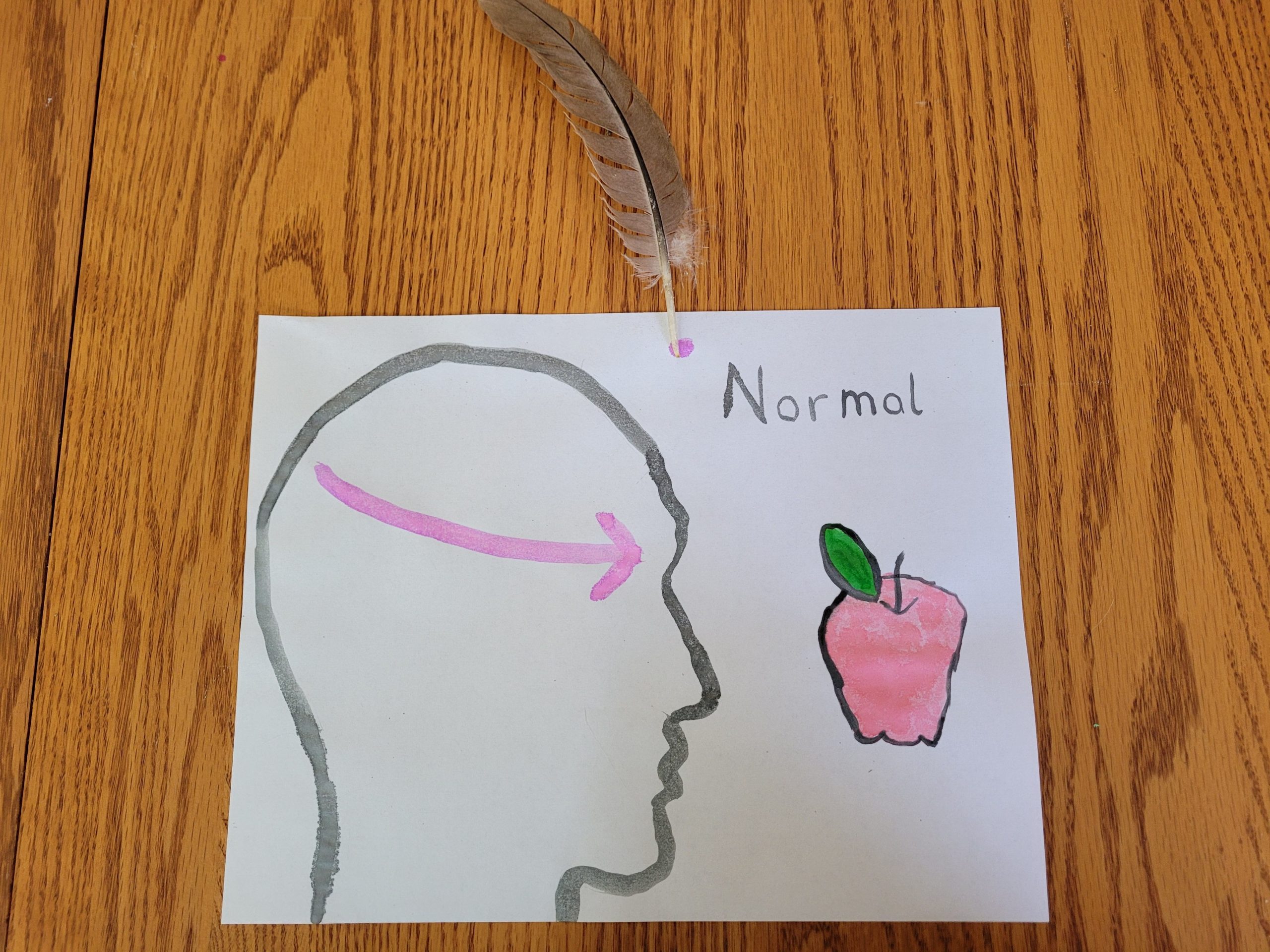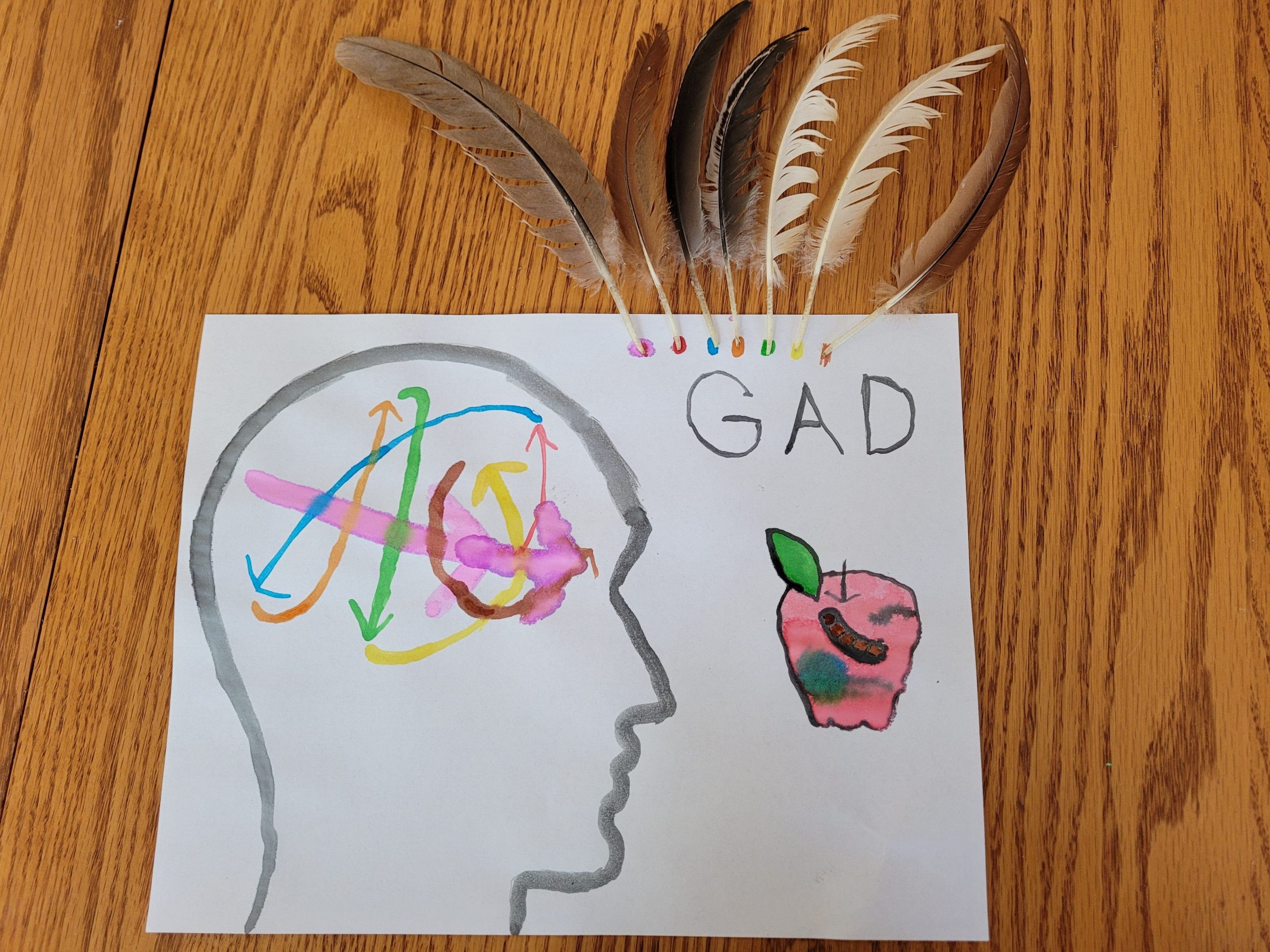

My STEAM project portrays how Generalized Anxiety Disorder (GAD) affects a person’s perception of the world. GAD is a disorder that causes high levels of anxiety in response to things that would not normally be that stressful, such as driving, talking to other people and even being in the same room as another person (ADAA.org). Racing thoughts and excessive worrying are some of the major symptoms of GAD, which is what I am portraying in the paintings. All this excess stress is very taxing on the brain and nervous system, which results in symptoms such as constant fatigue as well as poor sleep quality (NHS) since the anxiety makes it hard to fall asleep and keep a normal circadian rhythm (ADAA.org). Along with many other genetic predispositions such as an overactive amygdala and hippocampus (news-medical.net), this leads to a vicious cycle that warps the perception of a person suffering from GAD, as is portrayed in my painting.
In my paintings I use watercolors to demonstrate worries, with each one being a different color. I used chicken feathers from our chickens that recently molted as “quill pens”, as if each worry feather is writing their contribution to the thought process in its own color. As you can see in the normal brain painting, there is one strong central worry, which becomes a positive thing since it provides a sense of direction and priority. While having just one worry may not happen all the time, the function it serves is the same even with many worries. The GAD brain on the other hand has that same strong worry influenced by many smaller worries, some of which may be relevant and some which may be irrational. This causes some distortion in perception, as seen by some of the smaller worries crossing over the lines and overcomplicating the big picture. This overthinking and racing thoughts can lead to something called brain fog, which makes the person feel like they are disconnected from the world and seeing everything through a haze since their thoughts are not very clear (NHS). It also leads to other symptoms like poor memory recall and fatigue since these worries never give the brain a break since it is constantly firing its neurons. Excessive worrying can often lead to depression if left untreated, and often people suffering from GAD assume the worst outcome.
GAD is still being researched and shows just how complicated the human nervous system is. The fact that just a little overactivity in the brain can cause such a debilitating condition is so mysterious, especially when considering the possible different triggers for it. It is likely genetically based, but there are instances where some of the factors are it environmentally based. This makes me excited for the future of research because I feel like anxiety disorders are becoming increasingly relevant today even on a year-to-year basis, and the advancement happens so fast. Hopefully finding the critical point for treating GAD will not only help people with GAD manage their symptoms, but help us understand the human nervous system better as well.
Resources
- Generalized Anxiety Disorder (GAD): Anxiety and Depression Association of America, ADAA. Generalized Anxiety Disorder (GAD) | Anxiety and Depression Association of America, ADAA. (n.d.). https://adaa.org/understanding-anxiety/generalized-anxiety-disorder-gad.
- NHS. (2018, December 19). Overview – Generalised anxiety disorder in adults. NHS Choices. https://www.nhs.uk/mental-health/conditions/generalised-anxiety-disorder/overview/.
- Neural Mechanism of Generalized Anxiety Disorder. News. (2019, February 26). https://www.news-medical.net/health/Neural-Mechanism-of-Generalized-Anxiety-Disorder.aspx.
